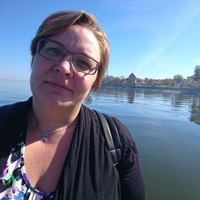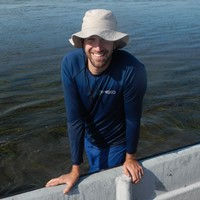Seagrass Ecosystems, Associated Biodiversity, and Its Management
A special issue of Diversity (ISSN 1424-2818). This special issue belongs to the section "Marine Diversity".
Deadline for manuscript submissions: closed (31 January 2023) | Viewed by 34393
Special Issue Editors
Interests: sustainability; sustainable development; seagrass; fisheries; social–ecological systems; natural resource management; ecosystem services; transdisciplinary research
Interests: community ecology; biodiversity; seagrass; invertebrates; fish; grazing; biostatistics
Interests: marine botany; biodiversity; seagrass structure; seagrass and mangrove restoration; governance
Interests: blue carbon; biogeochemistry; microbial ecology; seagrass wasting disease; Labyrinthula; microbiome; biochemistry; decomposition
Special Issue Information
Dear Colleagues,
Seagrasses are increasingly recognized as being of significant value to nature and society. We now understand that they form critical nurseries for juvenile fishes and invertebrates, are an important component of the global carbon cycle, and increase water quality and protect our shores. Recently, the United Nations declared the decade on both Ocean Sustainability and on Ecosystem Restoration to promote the engagement of researchers and citizens on conserving and restoring seagrasses and other foundational species. Similarly, the Convention on Biological Diversity developed a post-2020 global biodiversity framework to ensure that the 2050 vision of living in harmony with nature is fulfilled and has designated seagrasses, corals, mangroves, and other coastal habitats as critical to the preservation of biodiversity. Uniting these efforts—promoting and conserving submersed aquatic vegetation to enhance biodiversity—is, therefore, a key frontier in the coming decade.
For this Special Issue, we invite submissions that elaborate on the value of seagrass ecosystems for coastal biodiversity with special relevance to governance and management. Topics may include but are not limited to conservation, restoration, fisheries, blue carbon, invasive species, disease, and microbiome. We encourage theoretical or empirical investigations on all aspects of seagrass ecosystem-associated biodiversity, including taxonomic, compositional, functional, and/or phylogenetic, and from all scales, from local to global—and how this biodiversity is relevant for governance and management of seagrass ecosystems. We also encourage submissions of studies concerning governance and management that consider seagrass ecosystem-associated biodiversity as well as the diversity of seagrass ecosystem services. A better understanding of seagrass diversity and the diversity of associated flora and fauna, as well as how seagrass ecosystems are governed/managed, will lead to improved decision making and greater success towards international goals to enhance and restore coastal functioning and biodiversity. We are looking forward to your submission on any topic dealing with seagrass ecosystem-associated biodiversity and its governance and/or management.
Dr. Lina Mtwana Nordlund
Dr. Jonathan S. Lefcheck
Dr. Salomão Bandeira
Dr. Stacey M. Trevathan-Tackett
Guest Editors
Manuscript Submission Information
Manuscripts should be submitted online at www.mdpi.com by registering and logging in to this website. Once you are registered, click here to go to the submission form. Manuscripts can be submitted until the deadline. All submissions that pass pre-check are peer-reviewed. Accepted papers will be published continuously in the journal (as soon as accepted) and will be listed together on the special issue website. Research articles, review articles as well as short communications are invited. For planned papers, a title and short abstract (about 100 words) can be sent to the Editorial Office for announcement on this website.
Submitted manuscripts should not have been published previously, nor be under consideration for publication elsewhere (except conference proceedings papers). All manuscripts are thoroughly refereed through a single-blind peer-review process. A guide for authors and other relevant information for submission of manuscripts is available on the Instructions for Authors page. Diversity is an international peer-reviewed open access monthly journal published by MDPI.
Please visit the Instructions for Authors page before submitting a manuscript. The Article Processing Charge (APC) for publication in this open access journal is 2600 CHF (Swiss Francs). Submitted papers should be well formatted and use good English. Authors may use MDPI's English editing service prior to publication or during author revisions.
Keywords
- seagrass
- submerged aquatic vegetation
- seascape, species and genetic diversity
- invertebrate and fish assemblages
- microbiome
- ecology
- invasive species
- disease
- blue carbon
- fisheries
- connectivity
- habitat restoration
- ecosystem services
- conservation
- management
- governance








